#history of senegal
Explore tagged Tumblr posts
Text

"The book does a wonderful job of complicating histories of photography globally, and through a combination of historical and ethnographic work, shows the enduring but changing power of images in Senegal."
2 notes
·
View notes
Text


This is a colourization I did of a Senegalese woman wearing traditional dress. The original b+w was taken by Mama Casset.
This took 3 hours to colourize.
I got the original b+w from @vintageeveryday
#africa#african#senegal#senegalese#black girl#black woman#african woman#west africa#history#black history#african history#traditional dress#colorization#colorized
127 notes
·
View notes
Text
Burkina Faso's Bold Move To Pay Off Debt
In 2024, Burkina Faso made a major stride in its pursuit of financial independence by repaying 3,000 billion FCFA (around $4.79 billion) of its domestic debt. While this marks a significant achievement for the country, it doesn't erase all of its financial obligations. As of the end of 2023, Burkina Faso's public debt was 55.6% of GDP, with expectations to rise to 57.2% in 2024.
Despite still holding over $1.99 billion in outstanding bonds, President Traore is pushing for greater economic sovereignty. By rejecting financial assistance from the IMF, Burkina Faso is taking bold steps towards reducing its reliance on external creditors, prioritizing self-reliance over foreign intervention.
This development underscores the ongoing challenges and aspirations for economic independence in Africa.
What did you guys think? Let us know in the comments.
Follow @authentic_african for daily posts on African News, History, and Pop Culture
#ibrahim traoré#burkina faso#freedom#black people#african people#blacklivesmatter#black lives matter#africa#afrika#colonialism#anti colonization#colonial history#fuck colonizers#racial injustice#end white supremacy#niger#senegal
45 notes
·
View notes
Text

Facts About Senegal That makes It Special🇸🇳🇸🇳
1. Senegal 🇸🇳 is a country in West Africa known for it's vibrant culture with over 20 ethnic groups.
2. The capital of Senegal 🇸🇳 is Dakar, which is the political and economic capital of Senegal and holds over 30 percent of Senegal's total population.
3. Senegal 🇸🇳 has a Pink Lake. The lake contains high concentrations of salt and bacteria that can only survive under a particular condition and gives off a pink colour when absorbing sunlight, the uniqueness of the Pink Lake has attracted a lot of Tourists to the country.
4. Senegal 🇸🇳 boasts of beautiful colonial architecture, secluded beaches blessed with world famous surf breaks, and wildlife.
5. Senegal's biggest export are peanuts and fish.
6. In 2026, Senegal 🇸🇳 might be the first African country to host the Summer Youth 0lympics.
7. One of Africa's most famous dish jollof rice originated from the Wolof tribe of Senegal during the 14th-16th century.
8. The Senegalese flag 🇸🇳 has green,yellow and red vertical stripes with a central green star. These are Pan-African colours with green (along with the stars) representing hope and the country's major religion (Islam), yellow representing the riches and wealth obtained through labour and red representing the struggle for Independence, Life and Socialism.
Guys kındly clıck on the lınk to subscrıbe to our YøuTube channēl (YT: Historıcal Afrıca) to learn about Afrıcan and Black history. https://youtube.com/c/HistoricalAfrica
49 notes
·
View notes
Text

1910 portrait of a Senegalese woman, photographer unknown, in the collection of the Metropolitan Museum of Art, New York.
Her hairstyle is called "Nguuka". It used black wool padding and was popular in the early decades of the 20th century among married Senegalese women.
137 notes
·
View notes
Text

Young girl from Cayor (Senegal) - 1870s
51 notes
·
View notes
Text

SENEGAL INDEPENDENCE DAY TODAY 🇸🇳 ❗❤🖤💚
AFRICAN RENAISSANCE MONUMENT
#senegal#africa#motherland#black family#melanin#youtube#blaxploitation#black panther party of self defense#melanated#african family#afrobeat#marcus garvey#black art#black music#black man#black woman#black child#good habits#good black imagery#black history is world history#humanity#boycott#victims of white supremacy#black economics#group economics#black owned stores#black wall street#artwork#tropical#brownskin
53 notes
·
View notes
Text
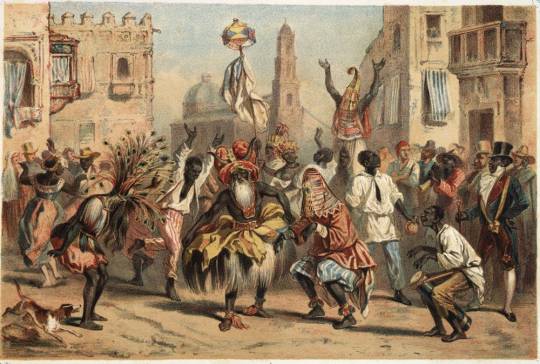
Long before it arose in New York City and became an influential style of music around the world, salsa music has its seeds in African rhythms and traditions that came to the Caribbean through the slave trade. Centuries of enslavement caused many cultural changes in Cuba, including the music that led to salsa.
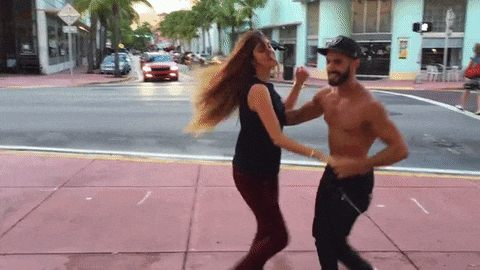
Some people know Bobby Day’s 1958 “Rockin’ Robin” or Michael Jackson’s remake but the origin of the song goes back to the days of slavery.
The majority of the Africans that were enslaved and brought to the Americas were of West African descent where the drum was used as a form of communication. In the Americas, enslaved Africans used the drum in the same way — communicating with the enslaved on distant plantations and ultimately planning uprising.
The enslavers caught wind of this and enacted a ban.
It is absolutely necessary to the safety of this Province, that all due care be taken to restrain Negroes from using or keeping of drums, which may call together or give sign or notice to one another of their wicked designs and purposes. — Slave Code of South Carolina, Article 36
That ban went down in 1740 and soon spread throughout Colonial America.
But the beat is in the heart of the African.
We soon found other ways to imitate the sound of the drum; stomping, playing spoons, washboards, or anything other household item. We also “slapped Juba” or played “hambone” where the body became an instrument where the player slaps their thighs and chest for the drum beat. (How did young boys in 1980s Park Hill, Denver know “Hambone?”)
Although we kept the beat, we lost the tradition, a cultural marker snatched away from us.
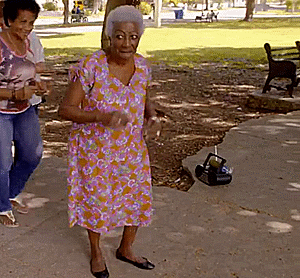
While the American enslaver worked feverishly to destroy any vestige of African culture, the Spanish enslaver of Cuba felt that it was in his best interest to allow the enslaved African to maintain his culture. In support of that, the Spanish allowed the Africans to organize Cabildos (or social groups) based on their nation of origin. Thus you had the Abakua (or Ekpe) from the nations known as Nigeria and Cameroon, the Madinga (or Malinke) from Sierre Leone, etc.
Our focus is primarily on the Lucumi, the Cabildo founded for the Yoruba of Benin and Nigeria. This lineage would be the cornerstone and origin point for what is now called “Salsa.” And what is this “Salsa?”

When we spoke of the drum being forbidden among the enslaved Africans in America, we forgot to mention that there was one place that didn’t enact that ban. That place was the port city of New Orleans, Louisiana — some even call New Orleans the Northernmost Caribbean city.
Similar in the way that the Spanish allowed for Cabildos in Cuba, the Louisiana enslavers permitted Sundays off and were okay with the dance and celebration so long as the enslaved African did so outside of the city limits in a place called Place des Negres (eventually known as Congo Square).
After the Civil War, Africans in America were able to get a hold of surplus brass instruments and shortly thereafter began composing music based on the popular music in the Caribbean at the time, the Cuban Habanero. Many say that this is one of the foundations of jazz music itself and the basis of the habanero, the tressilo, can be heard in second lines. Self-proclaimed jazz inventor, Jelly Roll Morton had this to say:
Now take the habanero “La Paloma”, which I transformed in New Orleans style. You leave the left hand just the same. The difference comes in the right hand — in the syncopation, which gives it an entirely different color that really changes the color from red to blue. Now in one of my earliest tunes, “New Orleans Blues”, you can notice the Spanish tinge. In fact, if you can’t manage to put tinges of Spanish in your tunes, you will never be able to get the right seasoning, I call it, for jazz. Jelly Roll Morton
Because of those qualities, a young musical prodigy from Cuba, Mario Bauzá recognized the similarities between jazz and Cuban music straightaway. Bauzá fell in love with jazz having heard it on Cuban radio but it was his trip to Harlem, NYC in 1927 that convinced him that New York was where he wanted to be and jazz was the music that he wanted to play.
Bauzá returned to New York in 1930, immediately found work, eventually landing a gig in the Cab Calloway band. Here he brought on the legend in the making, Dizzy Gillespie, and the two became fast friends. Bauzá attempted to play his “native” music to many in the band but they dismissed it as “country” music. Gillespie, on the other hand, embraced it.
For the next eight years Bauzá played in predominately African jazz bands having seen discrimination from white Cubans. Yet he longed to start a group that incorporated the music from his home and his second love, jazz. He shot this idea to his childhood friend/brother-in-law and in 1939 at the Park Palace Ballroom the Machito Afro-Cubans would debut.
“I am Black, which means my roots are in Africa. Why should I be ashamed of that?” Bauzá said in reference to the name.
Bauzá replaced the drum kit, which at that time had only been around for 20 years, with the hard to find congas, timbales, and toms. “The timbales play the bell pattern, the congas play the supportive drum part, and the bongos improvise, simulating a lead drum”. In the 40s these drums could only be found at Simon Jou’s bakery, La Moderna, locally known in East Harlem simply as Simon’s.
Next, the Afro-Cubans needed a home and they would find that not in Harlem nor the Bronx, but instead in Midtown Manhattan, a club called the Palladium.
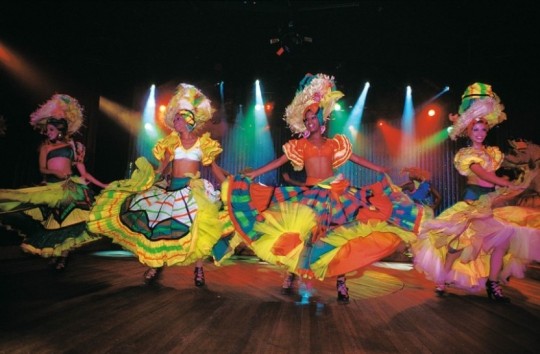
Salsa is a set of Afro-Caribbean rhythms fused with jazz and other styles. The truth is that its origins have always been much debated, although as a general rule it is mentioned that it comes from a fusion that came from Africa in the Caribbean when they heard European music and wanted to mix it with their drums
These origins focus especially on mambo, danzó, cha cha chá, guaracha and son montuno, later enriched with instruments such as saxophone, trumpet or trombone.
It was the Cuban exiles and those from Puerto Rico who popularized salsa in New York back in the 1950s. But it wasn't until the last third of this century that salsa dancing began to take off all over the world.
Cuba played a leading role in the origin of salsa. Already in the 1930s, melodies and rhythms from Africa were playing on the Caribbean island. Among them was the danzón, a musical piece acquired by the French who had fled Haiti.
History tells us that it was these first rhythms that were then mixed with rumbas such as guagancó and sonero to begin to create their own Afro-Cuban rhythms, including Afro-Cuban jazz, mambo, guaracha, Cuban son and montuno.
The exquisite melody of these new rhythms soon set in other Latin American countries. Puerto Rico and Colombia were the first to welcome these new sounds from the Cuban country.
However, it was not until their appearance in the United States, and more specifically in the Bronx neighborhood of New York, when these rhythms acquired a greater impact. It was the moment in which new musical instruments were added that today form an indissoluble part of salsa.
The great Cuban musicians who moved to New York along with the wave of these new rhythms created the famous tumbadoras, congas or son montuno, and were responsible for introducing trombones and guaracha.
The Origin of the Salsa Dance Steps
Once salsa was defined as a musical genre in the 1970s, the movements and steps of its dance were collected through a fusion of the African with the European.
These steps and movements of salsa fundamentally reflect the influence of the dances that the Africans brought to the Caribbean and the European dances that have been danced in Cuba since the 1930s.
So much so that the basic steps of salsa are precisely the same steps as the Cuban son, just as it also includes steps that can be seen in rumba, danzón and mambo.
The origin of these variants is in the regions where this style comes from, which are the ones that developed each dance, always under the same umbrella of the term salsa.
It is not surprising, then, that salsa is defined as the result of a series of social conditions and the evolution of a series of rhythms and melodies from Cuba, which were developed and achieved repercussion in the United States.
There are those who assure against this mixture that salsa is neither a rhythm nor a style, but rather a term that serves to represent all the music of Afro-Cuban origin that emerged in the first decades of the twentieth century.
In short, the origin of salsa has always been, and will continue to be, much discussed. American musician Tito Puente was right when he said, "Salsa doesn't exist. What they now call salsa is what I have played for many years, and this is mambo, guaracha, cha cha chá and guagancó".
#salsa#cuba#congo#nigeria#african#afrakan#kemetic dreams#brownskin#africans#afrakans#brown skin#african culture#afrakan spirituality#nigerian#nigerians#ghana#niger#cameroon#senegal#west africa#afro cuban#american#african american#african american history#american history#dance#african dance#congo dance#ekik#yoruba
22 notes
·
View notes
Text
Two griots playing koras, Senegal, c. 1900

#music history#musical instruments#traditional music#kora#photography#black and white photography#african music#Senegal#circa 1900
8 notes
·
View notes
Text
#uploads#videos#Africa#lesotho#Rwanda#Senegal#Benin#Zambia#burkina faso#Ghana#Tanzania#Ethiopia#Cameroon#Uganda#malawi#Zimbabwe#black history#black history month#geology
73 notes
·
View notes
Text
Exploring the History of the Jolof/Wolof Empire: A Fascinating Historical Overview
The Jolof Empire, also known as the Wolof Empire, was a prominent confederacy state that exerted its influence over vast expanses of West Africa, specifically in present-day Senegal, Mali, Gambia, and Mauritania, from the 12th century until 1549. It is fascinating to note that the founder of this empire, Ndiadiane Ndiaye, whose existence is steeped in mythology, was a prince with possible Fulani…

View On WordPress
#African Art#African History#Gambia#Jolof Empire#Mali#Mauritania#Senegal#West African#West African history#Wolof Empire
7 notes
·
View notes
Text
The west is panicking because Ibrahim Traoré of Burkina Faso is not there lil puppet like the other African and Caribbean leaders
20 attempts a on his life
#ibrahim traoré#burkina faso#niger#senegal#africa#black people#blacklivesmatter#black lives matter#black liberation#black power#racial injustice#black history#france#white supremism#white supermacists#colonization#colonialism#fuck colonizers#anti colonization#gold
41 notes
·
View notes
Text

Good evening Africa from Dakar, Senegal 🇸🇳.
This is the Senegal's Renaissance monument, it's the tallest statue in Africa at 49 meters high, the statue is taller than both the Liberty statue in the USA and Brazil's Christ the Redeemer statue.
116 notes
·
View notes
Text

Mariama Ba was born on April 17, 1929 in Dakar, Senegal, into a wealthy family. However, when her mother died, she was raised by her grandparents, respecting traditional Muslim education. She was one of the first women to have been educated during colonization. In parallel with her Koranic studies, she attended the Ecole Normale de Rufisque in 1936.
Ba's grandparents did not plan to educate her beyond primary school - they did not believe girls should be taught beyond that - however, her father's insistence on giving her an opportunity eventually persuaded them. She said:

Very gifted, she turned to teaching in 1947. She married three times and had nine children. Given her personal journey, she was predisposed to question the place and role of women in traditional Senegalese and even African society.


She wrote numerous article on womens' rights in Africa. She also denounced gender inequality through her speeches.
In 1980, she was awarded the first Noma Award - an annual prize of $3000 endowed by Japanese publisher Shiochi Noma to African writers published within Africa.

She said:





2 notes
·
View notes
Text
HOTEP KAMIT !
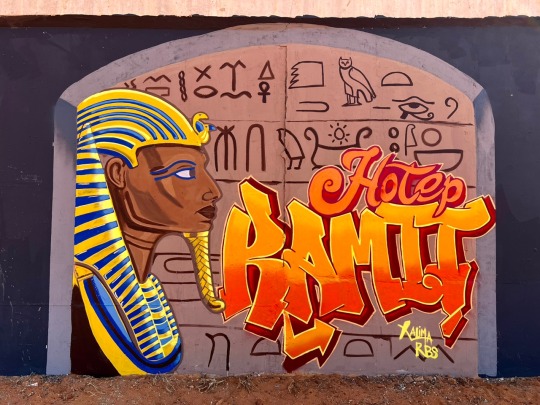
#ancient egypt#gods of egypt#artists on tumblr#history#hiphopartist#hiphopculture#west africa#senegal#graffiti#streetartandgraffiti#tutankhamun#tutankamon#kemet egypt
12 notes
·
View notes
Text




Tirailleurs Sénégalais and some French infantry of the Great War.
#Tirailleurs Sénégalais#history#miniatures#world war 2#military history#historic miniatures#world war 1#the great war#french army#french#france#colonialism#french colonialism#senegal
0 notes